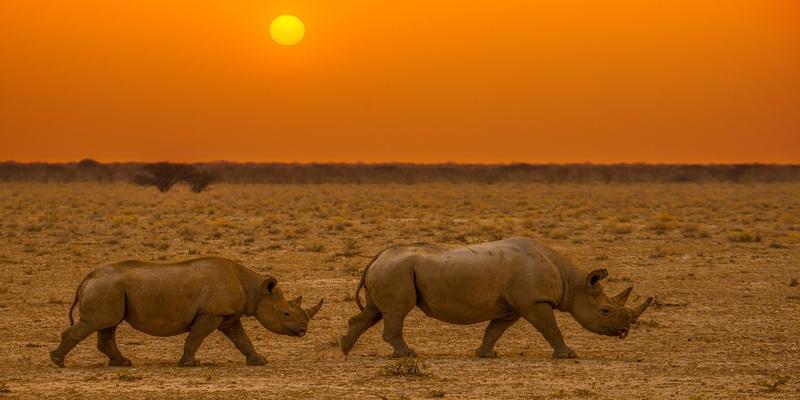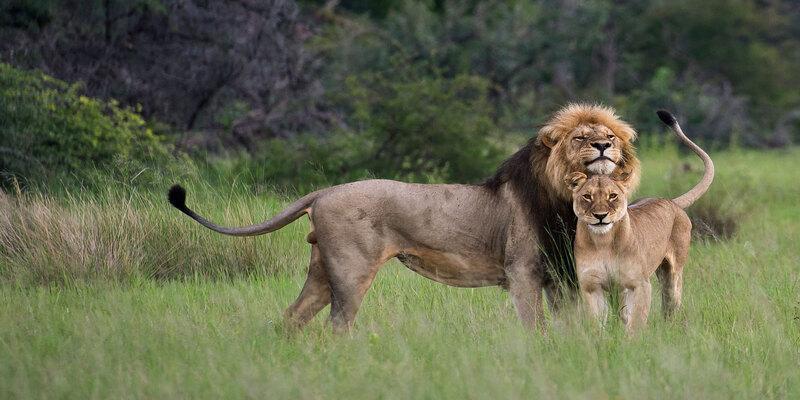Safari is a unique and exhilarating experience that allows visitors to witness the beauty and diversity of nature in its natural habitat. However, many animals visitors hope to see on safari are endangered, and it's crucial to be aware of the conservation efforts to protect them. African elephants, black rhinos, gorillas, cheetahs, and lions are just a few endangered species you might see on safari. Still, they all face different threats and require various conservation efforts to protect them. Habitat loss, poaching, and illegal trade are among the main threats these animals face, and it's essential to support sustainable tourism and conservation efforts to ensure that these magnificent creatures continue to thrive for generations to come. By understanding the challenges these animals face and the efforts being made to protect them, visitors can take an active role in conservation and contribute to protecting endangered animals on safari.
African Elephant
The African elephant is one of the most iconic animals on the continent and is a famous sight on safari. However, the African elephant is also one of the most endangered species, with an estimated population of around 415,000. The main threats to the African elephant are habitat loss and poaching for their ivory tusks. Habitat loss is a significant threat to the African elephant as their habitats are being destroyed for agriculture, infrastructure development, and human settlement. Poaching for their ivory tusks is also a significant problem, with the illegal ivory trade still prevalent in many parts of Africa. The demand for ivory, particularly in Asia, has led to the killing of thousands of elephants each year.
Black Rhino

The black rhino is another iconic animal that is found on safari. However, this species is also critically endangered, with an estimated population of around 5,500. The main threats to the black rhino are habitat loss and poaching for their horns, which are used in traditional medicine in some parts of the world. Habitat loss is a significant threat to the black rhino as their habitats are being destroyed for agriculture, infrastructure development, and human settlement. Poaching for their horns is also a significant problem, with the illegal trade in rhino horns still prevalent in many parts of Africa. The demand for rhino horns, particularly in Asia, has led to the killing of thousands of rhinos each year.
Gorilla
The gorilla is a fascinating and intelligent animal found on safari in some parts of Africa. However, the gorilla is also critically endangered, with an estimated population of around 100,000. The main threats to the gorilla are habitat loss and poaching. Habitat loss is a significant threat to the gorilla as their habitats are being destroyed for agriculture, infrastructure development, and human settlement. Poaching is also a significant problem, with gorillas being killed for their meat and body parts, resulting from conflicts with local communities.
Cheetah
On safari, you'll likely see cheetahs, the animals that hold the record for running the farthest distance in the shortest amount of time on land. On the other hand, the cheetah is a member of a species in danger of extinction since its total population is thought to number no more than 7,100 individuals. The most significant threats that cheetahs face today are the destruction of their natural habitat and the practice of illegal hunting. It is now being worked on to protect cheetahs and other kinds of wild cats by preserving the environments in which they live and putting a stop to the illegal trade in cheetah parts.
Lion

On safari, it is not unusual to catch sight of a lion, which is appropriate given the animal's reputation as the undisputed ruler of the jungle. However, some estimates suggest there are only approximately 20,000 lions left in the world. This puts the species in danger of becoming extinct. The most significant threats that lions face in today's world are the destruction of their natural habitat and the practice of unlawful hunting. Along with other conservation-related endeavors, measures are now being taken to protect lions and other large cats by preserving the environments in which they live and stopping the illegal trade in lion body parts, among other activities.
Conclusion
In conclusion, safari is a beautiful opportunity to witness the beauty and diversity of animals in their natural habitat. However, many animals visitors hope to see on safari are endangered, and it's crucial to be aware of the conservation efforts to protect them. By choosing responsible safari operators and avoiding activities that may harm the animals or their habitats, we can help to ensure that these magnificent creatures continue to thrive. Additionally, supporting sustainable conservation efforts and spreading awareness about these animals' challenges can help make a real impact in protecting endangered animals on safari.

Spend Your 2023 Honeymoon in The Island Paradise Of The Seychelles.

Bucket List Adventure Ideas From Around The World

The Secret Sauce Behind Scott’s Cheap Flights

Best Canggu Cafés For Breakfast, Brunch, Vegan Lunch, Or Coffee

A One-Day Plan For Vienna That You'll Want To Copy

Tropical Paradise: Exploring the Best Beaches and Resorts in the Caribbean

Ann Arbor's Top 9 Things To Do: The Complete Pure Michigan Guide

5 Family Vacations Without Any Flying In 2023

Which is better to go to: Luxor or Alexandria?

Things To Do And See In Atlantic City, New Jersey

Exploring Dalat's Unique Culinary Offerings
